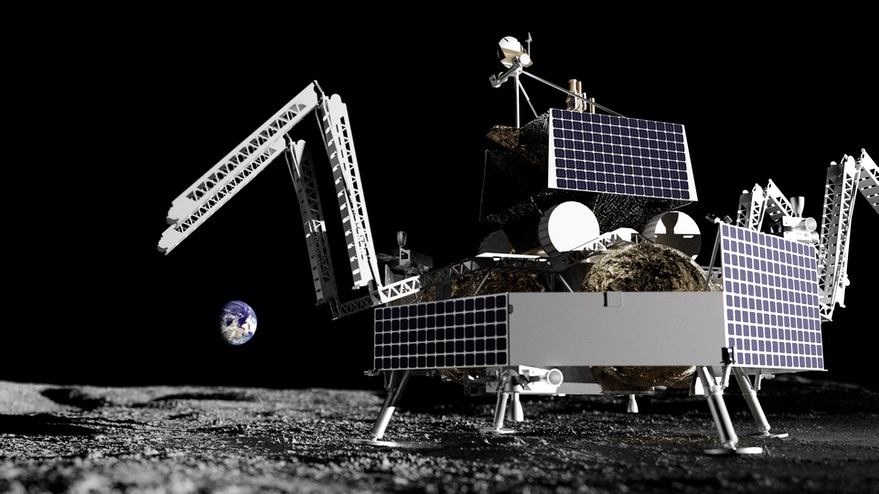WASHINGTON — NASA has delayed the launch of an ice-prospecting lunar rover by a year to perform more testing of its commercial lander, the agency announced July 18.
NASA said it is delaying the launch of its Volatiles Investigating Polar Exploration Rover (VIPER) mission from November 2023 to November 2024. The rover is designed to land near Nobile Crater in the south polar regions of the moon to look for water ice, of interest to both lunar scientists and as a resource for future human missions.
The one-year delay is to conduct additional ground testing of the Griffin lunar lander that Pittsburgh-based Astrobotic is building to deliver VIPER to the lunar surface. NASA awarded Astrobotic a task order in June 2020, originally valued at $199.5 million, to transport VIPER as part of the agency’s Commercial Lunar Payload Services (CLPS) program.
NASA said that the additional tests are intended to reduce the risk of landing VIPER. To conduct the work, NASA is adding $67.8 million to the Astrobotic order that, with previous increases, brings the value of the award to $320.4 million.
VIPER is by far the largest and most expensive payload assigned to a CLPS mission to date, with an official cost estimate of $433.5 million. That has clashed with NASA’s “shots on goal” approach to CLPS where the agency has emphasized a higher tolerance of risk, and of mission failures, to keep costs down.
“VIPER is NASA’s largest and most sophisticated science payload to be delivered to the Moon through CLPS, and we’ve implemented enhanced lander testing for this particular CLPS surface delivery,” Joel Kearns, deputy associate administrator for exploration in NASA’s science mission directorate, said in the agency statement.
An audit of the VIPER mission by NASA’s Office of Inspector General, published in April, noted that NASA instituted “augmented oversight” of the CLPS task order to Astrobotic given the higher cost and importance of VIPER compared to other CLPS missions. That oversight includes meetings three times a week among NASA and Astrobotic personnel to discuss issues with both VIPER and the Griffin lander.
That audit also noted that NASA’s decision to select a lander before finalizing the design of VIPER led to cost increases. VIPER did not complete its critical design review until October 2021, more than a year after the CLPS award, and the audit found several issues, such as an increase in mass of the rover and concerns about excess vibration, that led to changes in the Astrobotic CLPS task order that increased its value.
“Additional modifications remain a possibility, as the rover and Griffin Lander have yet to complete their designs and finalize their requirements,” the audit stated. “Also, because CLPS is a new acquisition model for NASA, additional revisions may become necessary as the project matures and lessons are learned.”
Another risk is that Astrobotic has yet to launch its first lunar lander mission, Peregrine. The company unveiled the lander, still in final assembly, in April, and plans to launch it as soon as late this year on the inaugural flight of United Launch Alliance’s Vulcan Centaur. While Griffin is a different, larger lander, the audit noted that the landers share subsystems and any problems with them found on Peregrine’s mission could affect development of Griffin.
This is not the first delay for VIPER. When the agency announced the rover mission in 2019, it was projecting a launch in late 2022 with a cost of $250 million. By the time the agency awarded the CLPS task order for VIPER to Astrobotic, the agency had delayed its launch to late 2023 to enhance the rover and allow it to operate for 100 days, versus the 14 originally planned. That also contributed to the cost increase for the rover.
